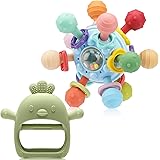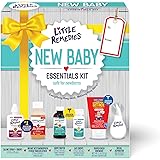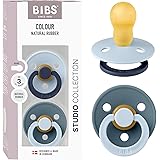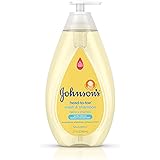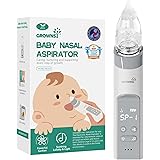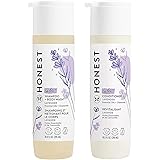As the accompanying video illustrates, the baby fruit feeder pacifier is more than just a convenient baby accessory; it’s an indispensable tool in a parent’s arsenal for navigating two critical phases of infant development: teething and the introduction of solid foods. This multifaceted device significantly mitigates common parental concerns, particularly the risk of choking during early feeding experiments, while simultaneously fostering crucial oral motor skills and palate development.
The Indispensable Role of Baby Fruit Feeders in Infant Development
The transition into solid foods and the often-uncomfortable teething period are significant milestones for infants. A quality baby fruit feeder addresses both challenges with remarkable efficacy, offering both relief and developmental benefits.
Addressing Teething Discomfort Effectively
Teething pain is a universal infant experience, often leading to fussiness, sleep disruption, and a general state of discomfort. Traditional teethers provide chewing resistance, but a fruit feeder amplifies this benefit by introducing a cooling sensation and the subtle flavor of frozen contents. For instance, a frozen banana or a chilled piece of breast milk or formula provides localized cold therapy, which helps numb sore gums. The act of gnawing on the silicone or mesh pouch provides counter-pressure, a vital component in alleviating gum inflammation and pressure buildup. This controlled oral stimulation is superior to merely chewing on fingers or unsanitized toys, offering both hygiene and focused relief.
Facilitating Early Solid Food Introduction
The journey from milk to solids is complex, involving new textures, flavors, and motor skills. A baby fruit feeder pacifier serves as an excellent intermediary, offering a controlled environment for these early explorations. It allows infants to experience the taste and texture of various fruits and vegetables without the immediate risk of large, potentially hazardous pieces. This method promotes a gradual desensitization to new food profiles and textures, vital for preventing picky eating later on. Furthermore, the feeder encourages independent feeding, enhancing an infant’s gross motor skills as they grasp and direct the feeder, and refining their oral motor skills through sucking, gumming, and eventually chewing motions.
Navigating the Market: Types and Materials
Understanding the construction and material science behind baby fruit feeders is crucial for making an informed choice that prioritizes both efficacy and safety.
Silicone vs. Mesh Feeders
The market primarily offers two types: silicone and mesh feeders, each with distinct advantages and disadvantages. Silicone feeders, typically made from food-grade, BPA-free silicone, are durable, easy to clean, and less prone to harboring bacteria. Their resilient nature withstands rigorous chewing, making them ideal for aggressive teethers. They offer a firmer texture experience, which can be beneficial for developing stronger oral muscles. Conversely, mesh feeders, often made from fine nylon or cotton mesh, provide a softer, more pliable feeding experience. While they excel at filtering pulp and preventing larger chunks, they can be more challenging to clean thoroughly, potentially retaining food particles and odors over time. Silicone feeders generally offer a more hygienic and long-lasting solution, making them a preferred choice for many pediatric feeding specialists.
Prioritizing Safety and Ergonomics
Material composition is paramount. Always select feeders constructed from certified food-grade, BPA-free, PVC-free, phthalate-free, and latex-free materials. These certifications ensure that no harmful chemicals leach into the baby’s food. Beyond materials, consider ergonomic design. Feeders with broad, easy-to-grip handles facilitate an infant’s developing pincer grasp and gross motor skills, allowing them to manipulate the feeder independently. A secure locking mechanism is also critical to prevent accidental opening during vigorous use, ensuring the contents remain safely contained within the feeder chamber.
Maximizing Utility: What to Put In and How to Use
The versatility of a baby fruit feeder is unlocked by understanding appropriate contents and best practices for introduction and supervision.
Ideal Contents for Your Baby Fruit Feeder
The range of suitable contents is broad, limited primarily by choking hazards for unfed pieces. For teething relief, consider frozen breast milk or formula cubes, frozen fruit pieces (such as banana, mango, berries, or melon), or even chilled, steamed vegetable pieces like carrots or sweet potatoes. When introducing solids, a variety of soft fruits like avocado, ripe pears, or peeled apple slices (steamed until soft) are excellent choices. Vegetables such as steamed broccoli florets or zucchini can also be offered, allowing the infant to explore diverse flavors and textures early on. Always ensure fruits and vegetables are ripe, free from seeds, and cut into manageable sizes before insertion into the feeder pouch.
Best Practices for Introduction and Supervision
Introduce the fruit feeder when the infant is in an alert, seated position, ideally supported in a high chair. Initial sessions should be short, allowing the baby to explore the device and its contents at their own pace. Constant supervision is non-negotiable to monitor for any signs of discomfort, allergic reactions, or potential hazards, however rare. Observe how the infant interacts with the feeder; this provides valuable insights into their oral motor development and tolerance for new textures. Gradually increase exposure as the baby becomes more comfortable, turning it into a positive and engaging feeding experience.
Maintenance and Longevity: Keeping Feeders Hygienic
Proper cleaning and timely replacement are essential for maintaining a hygienic and safe feeding environment for infants.
Thorough Cleaning and Sterilization Protocols
Given its contact with both food and an infant’s mouth, a baby fruit feeder pacifier requires diligent cleaning after each use. Disassemble the feeder completely, separating the handle, ring, and silicone/mesh pouch. Wash all components thoroughly with warm, soapy water, paying particular attention to crevices where food particles might accumulate. For silicone feeders, boiling for 3-5 minutes or using a steam sterilizer offers effective sanitization. Mesh feeders, due to their intricate weave, may benefit from soaking in a mild sterilizing solution or thorough brushing to prevent mold growth. Always ensure all components are completely dry before reassembly and storage to inhibit bacterial proliferation.
When to Replace Your Baby Fruit Feeder
Even the most durable baby products have a lifespan. Regularly inspect the fruit feeder for signs of wear and tear, such as cracks, tears, discoloration, or sticky residue, especially in the silicone or mesh pouch. These signs indicate material degradation, which can compromise both safety and hygiene. A worn feeder might harbor bacteria more easily or even break, posing a choking risk. As a general guideline, replace silicone pouches every 2-3 months or sooner if damage is observed. Mesh feeders, due to their higher susceptibility to wear and cleaning challenges, often require more frequent replacement, perhaps monthly, depending on usage frequency and maintenance.
The baby fruit feeder pacifier stands out as a critical innovation for infant care, providing a safe, hygienic, and developmentally beneficial approach to managing teething discomfort and initiating the journey into solid foods. Its thoughtful design supports independent eating and oral motor skill development, making it a true must-have for modern parenting.



